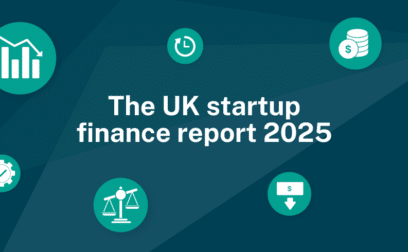The Seed Enterprise Investment Scheme (SEIS) and the Enterprise Investment Scheme (EIS) are UK Government-backed investment programmes for young, high-growth potential companies. The schemes give generous tax relief to investors in these types of businesses. They invest, you get funding, they get a tax break – it’s a win-win for everyone. Since 1994, the schemes have raised more than £25 billion for over 45,000 up and coming companies. However, to make the most of these popular programmes, businesses and investors should ensure they have something called Advance Assurance – because without it, those tax breaks or investments may not be happening. Read on for the full facts about Advance Assurance and how it can help you give your business the boost it deserves.
What is Advance Assurance for SEIS?
Investors seeking to invest in SEIS need to know the company they are investing in is eligible for the scheme. If it’s not, they won’t get their tax breaks. Businesses can obtain proof of their eligibility for SEIS by seeking Advance Assurance (AA) from HMRC. (Advance Assurance will not tell the company if an investor is eligible for SEIS).
Applications for AA can be filed by the company secretary, a director, or a trustee if the social enterprise is a charitable trust.
Read more: our in-depth Seed Enterprise Investment Scheme (SEIS) guide.
What is Advance Assurance for EIS?
Advance Assurance for EIS is the same as for SEIS, (see above). Same rules, same application process.
Read more: our in-depth Enterprise Investment Scheme (EIS) guide.
Is Advance Assurance mandatory for SEIS or EIS?
No, AA is not mandatory for SEIS or EIS but it is strongly advised that businesses obtain this proof of eligibility prior to approaching investors for funding with either scheme, and that potential investors request the proof from companies that approach them. Although HMRC will only provide a statement that says the investment is ‘likely’ to qualify for SEIS or EIS, (it’s not a cast-iron guarantee), it’s a strong indication that investments in the company will qualify for tax relief. Businesses and investors that enter into a SEIS or EIS agreement without Advance Assurance face the risk of HMRC later disqualifying the business from either scheme, leaving investors with zero tax breaks and the company with a problem.
How long does Advance Assurance last?
A company’s SEIS or EIS Advance Assurance from HMRC does not expire. However, changes to the company’s situation from the time of application to the point of share issuance may make their AA invalid. (For example, performing a non-qualifying trade).
How long will it take to get?
Allow up to eight weeks from the time of application to the point where HMRC provides their initial decision.
How can I check if I have Advance Assurance already?
Businesses do not automatically receive Advance Assurance, they must apply to HMRC for proof of their eligibility for SEIS or EIS. If you have not applied, you do not have AA. If you have applied and you have had no response from HMRC, you can contact them for an update:
- You can email HMRC at: enterprise.centre@hmrc.gov.uk although it may take up to two weeks to get a reply.
- You can phone HMRC on 0300 123 3440. However, this is not a direct line, it is a messaging service. You can leave a message and HMRC will determine if a reply is needed. You will usually get an answer quicker by email than by calling.
- Additionally, you can write to HMRC at:
Venture Capital Reliefs Team
HM Revenue and Customs
WMBC
BX9 1BN
Investors wishing to know if a company has Advance Assurance prior to investing should ask the company directors for their HMRC proof of eligibility for SEIS or EIS.
Advance Assurance for R&D
Research & Development tax relief for SMEs is designed to encourage innovation in industry. It does this by allowing companies to:
- Deduct an extra 130% of their qualifying R&D costs from their yearly profit, as well as the normal 100% deduction, to make a total 230% deduction.
- Claim a tax credit if the company is loss making, worth up to 14.5% of the surrenderable loss
To claim the relief the business must be a SME and show how their project meets the government’s definition of R&D. Companies who are making their first R&D claim can qualify for Advance Assurance to ensure their R&D activities qualify for this tax break. If Advance Assurance is granted by HMRC, any R&D claims in the first three accounting periods will be accepted if they’re in line with what was discussed and agreed in the AA application. You can find more information about this relief in the government’s ‘Making R&D easier for small companies’ guide.
What are excluded activities?
To be eligible for SEIS or EIS investment, companies must meet the following criteria:
- Have a permanent establishment in the UK.
- Are not trading on a recognised stock exchange at the time of the share issue and do not plan to do so.
- Have been trading for less than seven years, (ten years with KIC).
- Have no more than 250 full-time employees at the time the new shares are issued, (500 employees with KIC).
- Do not control another company other than qualifying subsidiaries.
- Are not controlled by another company, or do not have more than 50% of their shares owned by another company.
- Do not expect to close after completing a project or series of projects.
- Do not have gross assets worth more than £15 million before any shares are issued, and not more than £16 million immediately afterwards.
Additionally, investments must be used for a qualifying trade. Many trades are eligible for SEIS or EIS, but companies may not qualify if more than 20% of their trade includes things like:
- Coal or steel production
- Farming or market gardening
- Leasing activities
- Legal or financial services
- Property development
- Running a hotel
- Running a nursing home
- Generation of energy, such as electricity and heat
- Production of gas or other fuel
- Exporting electricity
- Banking, insurance, debt, or financing services
See the full list of non-qualifying trades or register with Swoop to find out if your trade qualifies for SEIS or EIS.
SEIS Advance Assurance checklist
Companies seeking Advance Assurance for investment under SEIS rules will need to complete the official HMRC checklist and provide HMRC with details of potential investors as well as the following:
- Forecast of how much money the company hopes to raise
- Business plan and financial forecasts
- A copy of the latest accounts if available
- List of which companies will use the investments
- Details of all trading and activities to be conducted, plus an estimate of how much the company expects to spend on each activity
- A list of any amounts, dates, and venture capital schemes under which the company has previously received an investment
- Up to date copy of the memorandum and articles of association and details of any changes the company expects to make
- A copy of the register of members from the date of application for Advance Assurance.
- Latest draft of any documents used to explain the investment proposal to potential investors. (Company ‘pitch’ document)
- Details of any other agreements between the company and the shareholders or VCT
- A signed letter from one director or trustee if the company is allowing an agent to act on their behalf
- A completed checklist for SEIS with the Advance Assurance application form
- Any other documents to show the company meets the qualifying conditions for the SEIS
EIS Advance Assurance checklist
Companies applying for Advance Assurance for EIS will need to complete the EIS AA checklist and provide the same type of investor, company and project details as they would for SEIS (see above).
How do I apply for SEIS or EIS Advance Assurance?
All companies seeking Advance Assurance for proposed investments under the Seed Enterprise Investment Scheme or Enterprise Investment Scheme must apply to HMRC by completing an online application form. Businesses must also send the relevant SEIS or EIS checklist and any supporting documents with their application.
How will I be notified?
HMRC will usually provide their decision by post within eight weeks of receiving your application.
If HMRC provides Advance Assurance, they will send you a statement saying the investment is likely to qualify for SEIS or EIS, which you can show to your investors. If you go ahead with the investment, you’ll need to submit a compliance statement to use the scheme. Make sure that nothing has changed since you completed your Advance Assurance application. If it has, you’ll need to tell HMRC when you submit the statement, as the initial Assurance will no longer apply.
HMRC will give you permission to issue certificates to investors, so that they can claim tax relief. You do not need to raise the full amount of investment you included in your application.
If HMRC does not provide Advance Assurance, they will tell you why they think your application does not meet the conditions of the SEIS or EIS schemes. Note that if your application is not considered or incomplete, they will not give any feedback.
How can I find out more about Advance Assurance?
Determining if your project meets the rules of AA and how to give your application the best possible chance of success can be difficult. Small errors can lead to rejection by HMRC and drastically affect your fund-raising activities. Don’t leave it to chance. Register with Swoop to find out how make the most of your SEIS or EIS opportunity.
Swoop requires writers to use primary sources to support their work. These include white papers, government data, original reporting, and interviews with industry experts. We also reference original research from other reputable publishers where appropriate.
- SEIS/EIS statistics: https://www.gov.uk/government/statistics/enterprise-investment-scheme-seed-enterprise-investment-scheme-and-social-investment-tax-relief-may-2021/enterprise-investment-scheme-seed-enterprise-investment-scheme-and-social-investment-tax-relief-commentary-2021
- HMRC Advance Assurance: https://www.gov.uk/guidance/venture-capital-schemes-apply-for-advance-assurance
- HMRC: https://www.gov.uk/government/organisations/hm-revenue-customs
- SEIS Advance Assurance checklist: http://www.hmrc.gov.uk/gds/vcm/attachments/ Advance_assurance_applications_for_the_SEIS_Checklist.docx
- Qualifying trades: https://www.gov.uk/guidance/venture-capital-schemes-raise-money-by-offering-tax-reliefs-to-investors#trades
- Qualifying subsidiary: https://www.gov.uk/guidance/venture-capital-schemes-apply-for-the-enterprise-investment-scheme#subsidiary
- Non-Qualifying trades: https://www.gov.uk/hmrc-internal-manuals/venture-capital-schemes-manual/vcm3010
- Surrenderable loss: https://www.gov.uk/hmrc-internal-manuals/corporate-intangibles-research-and-development-manual/cird90500
- Making R&D Easier for SMEs guide: http://www.hmrc.gov.uk/gds/cird/attachments/rdsimpleguide.pdf
- EIS checklist: https://www.gov.uk/hmrc-internal-manuals/venture-capital-schemes-manual/vcm60180
- SEIS checklist: https://www.gov.uk/hmrc-internal-manuals/venture-capital-schemes-manual/vcm60280
- SEIS and EIS application form: https://public-online.hmrc.gov.uk/lc/content/xfaforms/profiles/forms.html?contentRoot=repository:///Applications/CorporationTax/1.0/VCSAA&template=VCSAA.xdp
- Not considered applications: https://www.gov.uk/guidance/venture-capital-schemes-apply-for-advance-assurance#notconsider



































 yet? Register here!
yet? Register here!